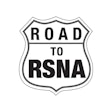Tuesday, December 2 | 9:50 a.m.-10:00 a.m. | T3-SSBR05-3 | Room S406A
Here, attendees will find out how commercial AI algorithms perform differently when examining digital breast tomosynthesis (DBT) exams.
Sarah Verboom from Radboud University Medical Center, the Netherlands, will present her team's research showing the respective performance of four commercial algorithms in a Dutch population-based breast cancer screening cohort.
The study included 18,186 screening DBT exams, of which the four algorithms processed 16,916 first-round exams (93%). Of these exams, 444 women were recalled at screening (2.6% recall rate). And 145 cancers were detected after recall (8.6% cancer detection rate).
The algorithms showed high, but variable performance, including the following area under the curve (AUC) values: Algorithm A, 0.978; Algorithm B, 0.973; Algorithm C, 0.953; and Algorithm 4, 0.943. The researchers reported significant differences between the AUCs of vendors A and B and those of vendors C and D (p < 0.001). They also found no significant difference between the AUCs of vendor A and B (p = 0.41) and the AUCs of vendor C and D (p = 0.11).
The team also analyzed recall rates fixed to that of screening. The algorithms showed even more varied performance for these recalled cases, including the following: Algorithm A, 83%; Algorithm B, 73%; Algorithm C, 47%; and Algorithm D, 32%.
"The highest 20% of scores included at least 97% of screen-detected cancers, for all AIs," the team highlighted in its abstract.
Find out more about how these algorithms performed by attending this session.


